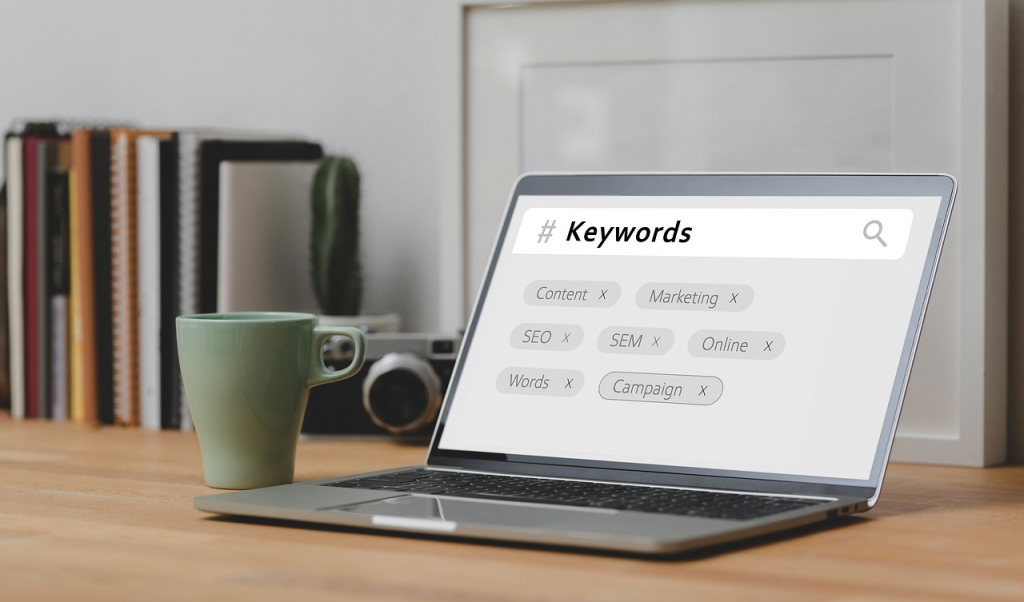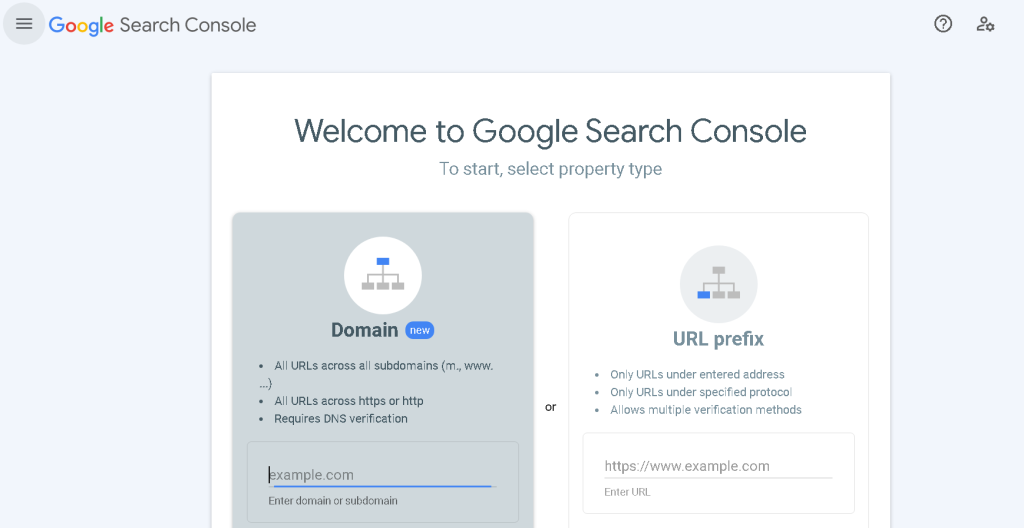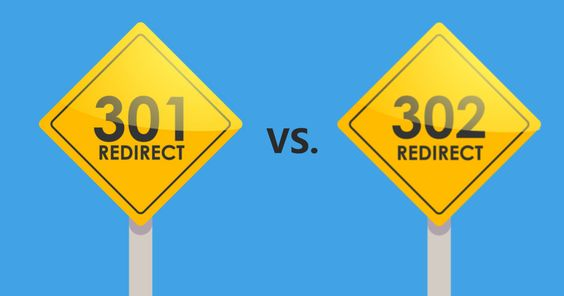For business owners and marketers seeking to increase their organic search visibility, the optimization of on-page elements is a critical component of effective SEO strategy. On-page optimization can help ensure your site gets found by the right people and improve its overall search ranking. In this post, we have shared a 36 point on-page SEO checklist you can use as a go-to guide to make sure your website’s content is optimized for maximum visibility in all major search engines.
While professional SEO services can do all the tasks for you, if you are the DIY type, this checklist will be useful. One of the most crucial steps you can take to run successful SEO campaigns and achieve higher rankings in a search engine’s organic results is On-Page SEO. All SEO processes are important for a website, and if it isn’t properly optimized for users and search engines, you won’t get as much traffic from search engines.
What is On-Page SEO?
The process of optimizing a webpage’s content for search engines is referred to as “On-Page SEO”. The ultimate objective of On-Page SEO is to help search engine crawlers comprehend the meaning and context of your pages by speaking to them in their language.
On-page Search engine optimization has the ability to bring incalculable new visitors and clients to your site.
On-page SEO is also entirely in your control. You get to decide what each page’s topic and/or objective will be. You get to choose who that page is meant for. Additionally, you can select the keywords and phrases you want to target. The process of optimizing various front-end and back-end components of your website in order to improve its ranking in search engines and attract new visitors is known as On-Page SEO. Content elements, site architecture elements, and HTML elements are components of On-Page SEO.
Importance of On-Page SEO
On-Page SEO is important because it tells Google everything about your website and how you provide value to users and clients. It helps big time in the optimization of your website for both humans as well as search engine crawlers. For your website to rank and attract new traffic, you must optimize it for Google and other search engines in addition to creating and publishing it.
On-page SEO is known as “on-page” because visitors to your website can see the changes you make to make it better (off-page and technical SEO elements aren’t always visible). You are completely in charge of all aspects of On-Page SEO. That’s why you can easily rank higher if you properly follow these steps.
Designed to enhance your online visibility and improve organic rankings, this infographic highlights 36 essential points for achieving better SEO results.

Also, Read: 29-Step Small Business SEO Checklist To Improve Rankings (Infographic)
36 Point On-Page SEO Checklist
Perform Keyword Research
Perform your keyword research first and foremost. If you don’t know which keyword you want to target, you can’t optimize your website. The majority of your keyword targeting and on-page SEO will be done in blog posts. Utilize tools for keyword research to locate keywords with low competition and adequate volume. On each page, focus on one keyword or keyword theme. This post, for instance, focuses on the keywords “on-page SEO”, “on page seo checklist” and “what is on page seo”. If separate posts are written for each keyword, they would compete with one another in the search engine results page (SERP). Google your search terms. You won’t rank if your page’s content doesn’t match the keyword’s intent.

Check Keyword Placement
Placing the keyword at the right places is as important as finding them. While writing about a particular topic, this frequently occurs naturally. However, there are times when people begin their content, particularly in blog posts, with a lengthy introduction and use their keyword for the first time much later. It is better to avoid placing keywords at the second half or bottom of the post.
Use LSI Keywords
In contrast to lexical search, in which the search engine looks for literal matches or variants of the query words, semantic search refers to search with meaning. The Hummingbird search algorithm from Google enables the search engine to comprehend your page’s entire subject. Google will fully comprehend the topic and subtopics related to your target keyword if you include LSI (Latent Semantic Index) keywords in your content, allowing you to rank higher.
Include Your Keywords in Title
When it comes to the placement of your targeted keyword, your title tag is a crucial on-page ranking factor. If your keyword is near the beginning of the title, it is given more weightage by search engine spiders. To avoid having your targeted keyword cut off in search results, keep it as close as possible to the beginning of your title tag and keep it between 50 and 60 characters.
Observe Keyword Density
The number of times a keyword appears as a ratio or percentage of the total word count on a given webpage or in a piece of content is referred to as the keyword density. You won’t find any Google guidelines that tell you exactly how many keywords should be in a piece of content, nor will you find any figures or statistics that you can rely on to tell you how densely keywords should or shouldn’t be on your website. This is on the grounds that modern search engines are sufficiently brilliant to comprehend what’s going on with a page and how well it matches search queries in alternate ways.
Avoid Keyword Cannibalization
When the same keyword or phrase is optimized and used on multiple pages of a website, this is known as keyword cannibalization. Because search engines won’t know which page to show for a given search query, this causes problems. Fortunately, your website’s keyword cannibalization can be easily and quickly detected. If you find that this is a problem on your website, you might want to consider combining content from rival pages and redirecting it to the asset with the most authority.
Write Meta Descriptions
Your meta description should be one-of-a-kind, have 150-155 characters, and include the keyword or keyword phrase you want to target. In addition, search results will display your meta description in bold if it contains the exact keyword the user is looking for. It’s like a small advertisement with the goal of getting people to click on your page in the search results.
Include Rich Snippets
In the search results, rich snippets are brief summaries of your page. Pricing, ratings, and other information may be included in rich snippets. It is possible to increase your clickthrough rate and make your search listing more visible by including rich snippets in your post.
Write Easy to Understand Content
You shouldn’t have long stretches of text. These are difficult to read, and many users would rather quickly skim the content before deciding whether or not to stay on the page. Therefore, ensure that your content contains headers and subheaders and that your paragraphs aren’t too long. Simply put, you should not use the H1 tag for any of your content headers because the H1 tag belongs in the title tag. As always, these are software suggestions, not rules for how to write your content. Write high-quality content for people, not machines, because you know your audience and your business best. As you can see below, the Hemingway Editor shows the readability level on the right. Any content you create should have a readability level of 8 or below.

Write High Quality Content
Unless you correctly specify the canonical tag, even if it is your own content, publishing it on another website is bad for your site. Your non-text content should be accompanied by text. For instance, if you upload images to your website, you should include an alt-text description. Don’t just publish content for the sake of it. Verify that the content that goes live adds value to your website and readers before hitting the publish button.
Both users and search engines don’t want to read posts that have been prepared quickly. It has been shown that longer articles rank higher than shorter ones. In addition to the aforementioned characteristics, you must ensure that your content meets the search intent. You need to know what kind of content users want to see for a given search query before you publish any content on your website.
Check Content Updation
Depending on the query, the importance of fresh content can vary, but any page you want to rank should be updated frequently to maintain its value. In order to do this, update or include new data. Fix any broken links and add links to new content. Verify that the keyword’s intent has not changed. Replace outdated images, particularly screenshots and graphs from authority websites.
Perform Content Audit
A useful method for determining which pieces of content are performing well and which ones are not adding value, is to conduct a content audit. This basically entails getting rid of content that doesn’t rank well, doesn’t add value, and shouldn’t be on your site in the first place. We cannot emphasize enough how important it is to devote time to conducting a content audit and eliminating thin, duplicate, or low-quality content. Based on how well the content is performing, you can also use content audit tools to determine which pages need to be updated, rewritten, or removed.
Use Right Title Tag Header
This can be the same as your page title, making it your top on-page attribute. According to Google, you can use as many H1 tags per page as you want. Because the H1 tag helps Google understand the structure of the page, it is recommended to use it once per page. Check to see that your H1 also includes your desired keyword.
Use One H1 Tag
The primary heading of your content is the H1 tag, and there should only be one on each page. Pages with multiple H1 tags will be flagged by your Site Audit tool. You should address these issues to ensure that each page only has one. The fact that your site’s logo and the page’s main heading are wrapped in multiple H1 tags is the most common reason for this. The primary target keyword for a page should be included in H1 tags, so ensure that you are tagging the appropriate content.
Use Correct Header 2 Tag
Subheadings should be included in at least one of your H2 tags, and your target keyword should be included in the rest. Check to see if you can incorporate some LSI (Latent Semantic Index) keywords into your subheadings as well. Breaking up content and making pages easier to read are two great uses for subheadings. Each page can contain multiple H2 tags.
Include Modifiers in Title
You can improve your ranking for long-tail versions of your target keyword by employing modifiers such as “2023”, “best”, “easy” and “review”. Some popular phrases used on the internet for relaunched blog posts include “the current year”, “the best” and “updated”. Your click-through rate (CTR) may also benefit from these modifiers.
Do External Linking
Google will see that your page and website are a hub of high-quality information if you link to related outbound websites. Partnering your site with other quality sites can aid page rankings and assist Google with better comprehension of what your site is about. Considering the numerous reasons why internal linking is so crucial to on-page SEO, including external links throughout your page may seem counterintuitive. External links, on the other hand, are crucial. Google will be aware of your page’s credibility and trustworthiness if you link to sites that are reputable and reliable. Your visitors as well as Google want to know that your website is well-referenced.
Do Internal Linking
Add two or three internal links to each new piece of content you publish. One of the primary advantages of internal linking is that it assists Google to find, comprehend, and index each and every one of the pages on your site. Internal links can give important pages authority if used strategically. Use keyword-rich anchor text, which is the text that helps users and Google understand what the page you’re linking to is about.
Include Social Media Linking
Social media is a great way to get more people to see your content, even though it does not directly affect search algorithms. It helps you connect with your intended audience and raises brand awareness. A small bonus is that the more people who see and share your social media content, the more likely it is that you will get a backlink.

Check Broken Links
According to data compiled by Ahrefs, if a page contains broken links to external sources, Google may remove it from search results. Always check your website for broken links on a regular basis, and if you find any, fix them or link to new content. Broken links can also have an impact on your off-page SEO. A broken link from a domain linking to your site gives a competitor an opportunity to reach out to you. Your business could lose not only a link but also potential customers as a result of this outreach opportunity. Broken links need to be fixed as soon as possible because of this.
Rectify Lost Links
If you lose backlinks, search results for that page’s targeted keywords may decrease as a result of losing links to high-value assets. As a result, you should pay close attention to the backlinks to your website’s most valuable pages as well as your overall backlink profile. First, focus on the backlinks that have more authority and then you can move to other backlinks.
Do Image Optimization
When it comes to user interaction metrics, images, videos, and other forms of multimedia can both decrease bounce rates and increase time spent on your website. You can break up your content by using images, and the alt tag description of your images gives you the chance to include your targeted keywords. The image file name is an optimization that is frequently overlooked. Include a brief description of your image in the file name as well.
Images that are too big should be resized. This will let pages load faster, which has a direct effect on search results. Make use of Google’s Lighthouse tool to locate large images. Any image on your page that is too big and slows down page loading will be flagged by the tool and you can properly resize them.
Optimize Mobile Speed
In 2010, Google made it clear that a website’s speed is an official ranking factor. They also said that they would be switching to mobile-first indexing and will begin using mobile page speed results in 2018. As a result, Google will prioritize indexing and ranking your content on mobile devices over desktop devices in the future. Because of this, it’s critical that your website loads quickly and without any issues in mobile phones. Fortunately, Google has provided a useful tool to determine your mobile page speed and, if necessary, ways to improve performance. Below, you can see a snippet of the result, when a page is tested for mobile friendliness with Google’s software.

Optimize Web Page Speed
Page speed is very important for on-page SEO. Even if you have high quality and informative content, if the page loads slowly, users will immediately leave the page resulting in a high bounce rate. The overall user experience is of utmost importance to Google. Google is aware that visitors to your website are more likely to leave if it loads slowly or haphazardly. In addition, site speed can affect ROI and conversions. Using Google’s PageSpeed Insights tool, you can check your website’s speed any time.
Perform Conversion Optimization
You are not doing it right if you are not also optimizing your website to attract more leads, subscribers or customers. Keep in mind that every page on your website offers a chance for conversion. This means that your website should have at least one call-to-action (CTA) on each page, though some pages may have more than one CTA. Make sure your website has a variety of CTAs for various stages of the buyer’s flywheel.
Make Use of Google Search Console
You can make use of various tools that are available in Google Search Console. For example, the URL Inspection tool will help you to determine if your page can be indexed when you submit your newly published URL. Click “Request Indexing” and GoogleBot will visit your website, crawl through its content, and then index it. If you have updated or made other changes to your content, this tool is useful in finding the new index of your page.

Add Open Graph Tags
On social media feeds like Facebook, LinkedIn, and Twitter, the Open Graph protocol determines what and how information is displayed. If you add open graph tags correctly, your content will look better and get more clicks, likes, and shares. Although social media does not directly affect search results, the more people who see your content, the better the chance of getting backlinks, which are definitely beneficial.
Keyword Rich URL
Your URLs for your web pages should be short and contain a lot of keywords. If at all possible, only use a targeted keyword at the beginning of the URL. It has been demonstrated that shorter URLs perform better in search results, so steer clear of lengthy and cluttered ones.
Add HTTPS Security
The secure method of transferring data between a server and a web browser is known as HTTPS. In 2014, Google made it clear that HTTPs would be used as a ranking signal. Since then, numerous studies have established a strong connection between websites that use HTTPS and higher rankings.

Use Schema Structured Data
The process of “marking up” your website’s source code to make it easier for Google to locate and comprehend various content elements is known as schema markup or structured data. It is the secret to the featured snippets, knowledge panels, and other content features that appear when you search for something on Google. When someone shares your content on social media, this is also how the information for your particular page appears so neatly. Although structured data is regarded as technical SEO optimizing it improves visitors’ on-page experience.
Also Read: Technical SEO Issues: Common Reasons Why Your Website is Not Ranking on SERPs
Create Indexable Web Pages
Making sure that your website can be indexed by Google is one aspect of knowing the basics of SEO. A website’s inability to be indexed by Google is not as common as you might think. In fact, when developers move code from a staging environment to a live one, they frequently leave no-index tags in place, resulting in a sudden de-indexing of a website. There are various tools available to check if your website can be crawled and indexed. Set up a project-wide site audit. Making sure that your site’s principal pages that ought to be indexed are really ready to be indexed can save a ton of future issues.
Check Page Depth
In an ideal scenario, the depth of a page on your website should not exceed three clicks.
If they are, this indicates that you need to spend some time flattening the structure of your website. Users and search engines are less likely to locate a page in your website’s structure the deeper it is. You can find the number of clicks it takes to arrive at a page with the help of an audit tool.
Improve Click Through Rates
WordStream found in a study that if you beat the expected CTR of your position in the search results, you are “far more likely to rank in more prominent positions”, whereas if you fall short of the expected CTR, you will begin to appear in lower positions. Using keyword-rich meta descriptions to help searchers understand what your page is about in search results and improving your page title by adding modifiers to it are two key factors that can help drive increased CTR.
Reduce Crawl Errors
It’s important to find and fix crawl errors. A crawl error indicates that Google cannot read or see the content of your page. Google may not index or rank your page in search results if it can not view it. The Google Search Console makes it simple to locate crawl error messages. When you sign in to the console, click on “inclusion” situated on the left-hand menu. You will be able to view and correct all URLs that contain crawl errors.
Implement 302 and 301 Redirects
302 redirects show that a redirect is brief, while 301s signal that the move is forever. Although Google has confirmed that 302 redirects pass PageRank, the fact remains that if a 302 redirect isn’t expected to be removed at any point in the future, it needs to be updated to a 301. It is fairly common to see 302 redirects used in place of 301 redirects.

Avoid 404 Errors
Other than internal linking, your business will need to zero in on 404 errors. When you have a messed up interface, it doesn’t lead anywhere on your site, with the exception of a 404 page. These pages can keep visitors on your website by providing a list of relevant pages, but they don’t provide much value to users and web crawlers see it as a negative sign.
Also, Read: How to Block Part of a Page from Indexing by Search Engines?
Final Thoughts
SEO is a process that updates constantly, so it is impossible to include everything essential on a single checklist. However, if you complete the aforementioned checklist items, you will be well on your way to higher rankings. When you want to optimize your site, you can carry out these suggestions on your own or hire an SEO expert to do it for you. Remember like any other marketing strategy, SEO too is not a one-time task. You should constantly work on improving it. We hope that our On-Page SEO checklist will help your SEO strategy in a great way.
FAQs
Why is On-Page SEO important?
The foundation of search engine optimization is on-page SEO. It makes it easier for spiders (web crawlers) of search engines to comprehend your website’s content and determine its quality and relevance to searcher’s queries which in turn will make you rank higher in search engine results page (SERP).
What are the important On-Page SEO techniques?
On-Page SEO consists of many techniques. Some of the most important ones would be to check if your site is optimized for speed, keyword, mobile friendliness, user experience, and linking.
Can I perform On-Page SEO optimization for my site on my own?
Yes, you can optimize your site with the help of the above pointers. In case you need expert assistance or you find difficulties in a particular area, you can approach a SEO expert to help you out.
![Boost Your SEO Game: 36 On-Page Checklist Items to Drive More Organic Traffic! [Infographic Included] 1 On-Page SEO Checklist - Complete Guide](https://www.pagetraffic.com/blog/wp-content/uploads/2023/05/on-page-seo-checklist.png)























